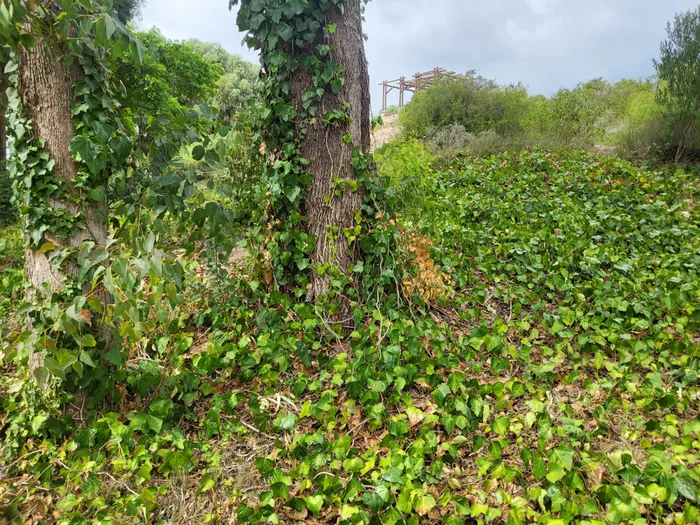Help protect Cape Town's biodiversity by removing invasive Ivy

English Ivy may look pretty, but it’s an aggressive invader that smothers trees and threatens local biodiversity if left unchecked.
Image: Supplied
The City is asking residents to help control a fast-growing plant that’s threatening local trees and natural areas.
In a media statement, the City said that English Ivy (Hedera canariensis and Hedera helix), originally introduced as an ornamental groundcover, has become invasive, rapidly spreading through Cape Town’s parks, gardens, and greenbelts, where it smothers trees, displaces native plants, and harms biodiversity.
The City’s recreation and parks department is actively clearing the invasive Ivy from public areas, but says community support is essential for keeping it under control.
“If we all do our part, we can protect our urban forests and biodiversity,” said mayoral committee member for community services and health, Francine Higham.
“Help the City beautify its parks and public open spaces by removing Ivy from your garden and reporting it where it grows in public open spaces. We urge residents to take action this winter while the plant is dormant. Let’s work together to stop the spread.”
Ivy is listed as a Category 3 invasive species under national biodiversity laws.
In sensitive wetland areas, it is considered Category 1b, which means it must be removed.
If left to grow unchecked, Ivy can smother trees by blocking sunlight and adding extra weight to branches, increasing the risk of them falling.
It can also occupy large areas of land, outcompeting local plants and thereby reducing biodiversity.
The City is asking residents to remove Ivy manually at home by pulling out the stems and roots.
Ivy can be carefully removed from tree trunks, while upper vines should be left in place to dry out and die. It’s important to check the area regularly and clear any regrowth.
Clippings should never be dumped in natural areas, as the plant can re-root and spread.
Instead, let the vines dry out on a plastic sheet or paved surface before shredding them, or seal them in black plastic bags and leave them in the sun for several weeks until they are no longer able to grow.
Residents can also help by reporting overgrowth in public areas using the City’s C3 service-request system, or by logging sightings on the iNaturalist app or website to help track the spread.
For more information on invasive species and how to manage them, visit the City’s website or contact the recreation and parks department.